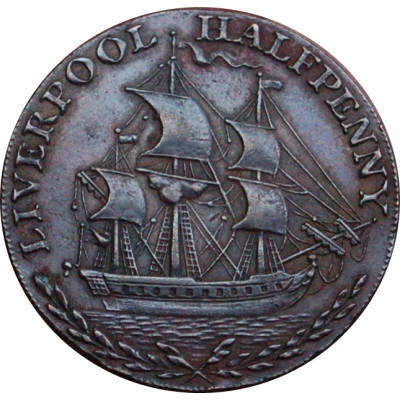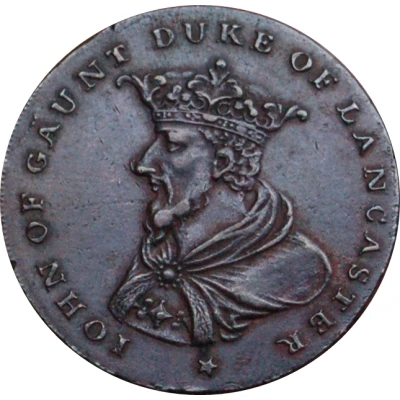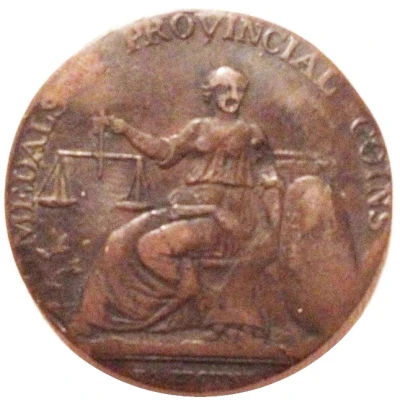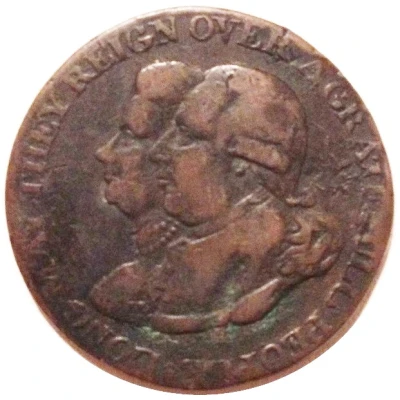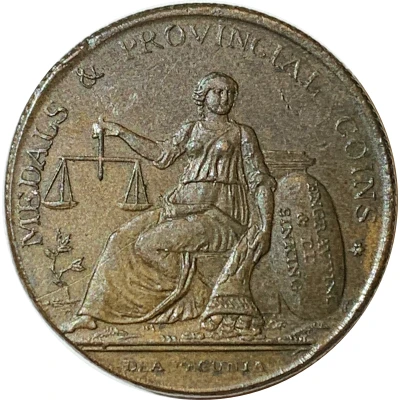
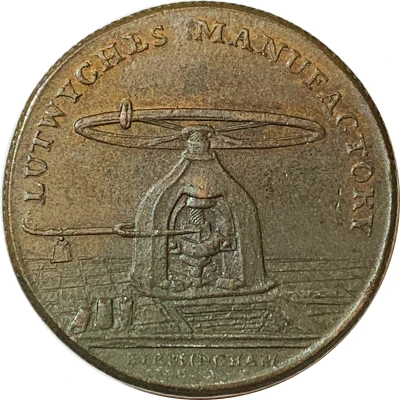

© Al Samples
½ Penny Warwickshire - Birmingham / Lutwyche's ND
| Copper | 14.4 g | 30 mm |
| Issuer | United Kingdom (United Kingdom, British Overseas Territories and Crown Dependencies) |
|---|---|
| Type | Token |
| Years | 1791-1797 |
| Value | ½ Penny (1⁄480) |
| Currency | Conder tokens (1787-1797) |
| Composition | Copper |
| Weight | 14.4 g |
| Diameter | 30 mm |
| Shape | Round |
| Technique | Milled |
| Orientation | Coin alignment ↑↓ |
| Demonetized | 1797 |
| Updated | 2024-10-09 |
| Numista | N#183074 |
|---|---|
| Rarity index | 94% |
Reverse
Old-style coining press. Lettering above and in exergue.
Script: Latin
Lettering:
LUTWYCHES MANUFACTORY
BIRMINGHAM
Edge
Diagonally milled.
Note: varieties exist
Comment
William Lutwyche, (1754-1801), toymaker, later token manufacturer, Temple Row and St Philip churchyard. Lutwyche was active in the production of tokens from 1791 until 1801 and seems to have had more individual commissions for than any other manufacturer. His output of more than 65 tons of "legitimate provincial coins" was exceeded only by that of Thomas Williams, the consortium of Westwood and Hancock, and that of Matthew Boulton. He frequently combined dies then in his possession to produce various mules, concocted numerous specious issues, and has been attributed with manufacturing the bulk of evasions and lighweight coppers that appeared toward the end of the 18th century.Interesting fact
One interesting fact about the Token ½ Penny (Warwickshire - Birmingham / Lutwyche's) ND (1791-1797) coin is that it was issued during a time of severe coinage shortages in the United Kingdom, particularly in the 1790s. The coin was minted privately by a merchant named John Lutwyche, who was granted permission by the government to produce tokens to alleviate the shortage of small change. The coin's design features a unique combination of symbols, including a crowned shield with the initials "GR" (for George Rex) and a rose, which represents England. Additionally, the coin's copper composition was a common material used for tokens during this time period.
